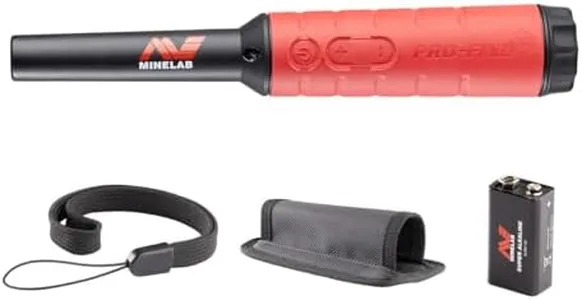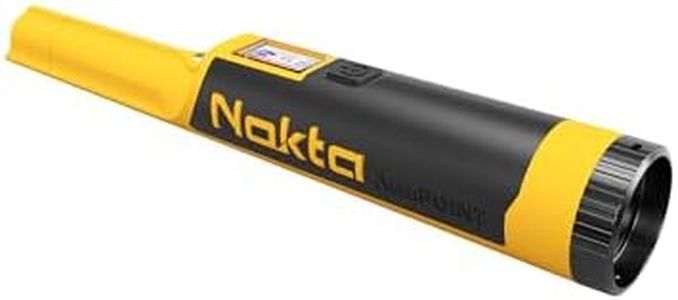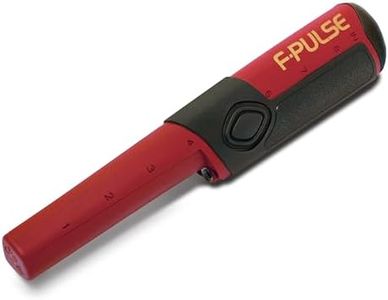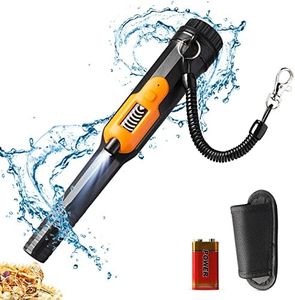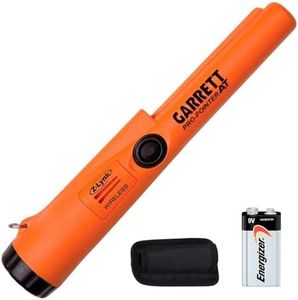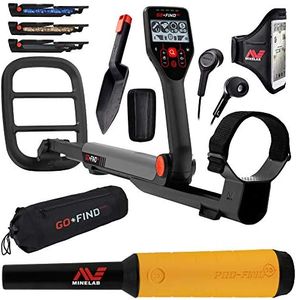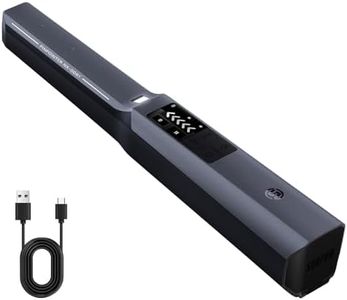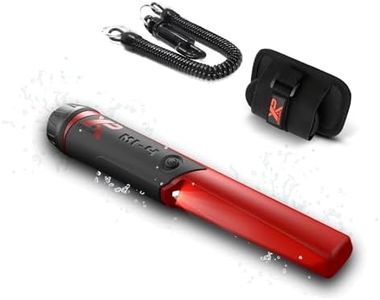We Use CookiesWe use cookies to enhance the security, performance,
functionality and for analytical and promotional activities. By continuing to browse this site you
are agreeing to our privacy policy
10 Best Metal Detector Pinpointers
From leading brands and best sellers available on the web.Buying Guide for the Best Metal Detector Pinpointers
Choosing the right metal detector pinpointer can make your treasure hunting or hobby detecting experience much smoother and more enjoyable. Pinpointers are compact, handheld devices used to precisely locate metal objects after your main detector has given you a signal. The key to picking a great pinpointer is understanding which features matter the most for your specific usage, environment, and level of experience. You want a pinpointer that is easy to use, reliable in different conditions, and suited to the type of treasures you're searching for.Detection DepthDetection depth refers to how far below the surface the pinpointer can sense metal objects. This is important because a deeper detection range can help you find items that are buried further down, but most pinpointers are designed for shallow detection to help you quickly locate items you've already found with a main detector. Detection depth is usually a few centimeters to several inches. For typical coin or jewelry hunting, most users don't need the deepest range, just enough to efficiently zero in on the target once they've started digging. If you are working in areas with loose soil or sand, a deeper-reaching pinpointer might help, but for hard or rocky ground, a shallower range can be more practical and precise.
Sensitivity LevelsSensitivity indicates how precisely and quickly the pinpointer responds to different sizes and types of metal objects. Higher sensitivity means the device can detect smaller or deeper objects, which is good for fine jewelry or tiny relics. Many pinpointers offer adjustable sensitivity settings so you can tune them for your environment: use higher sensitivity for finding small items and lower sensitivity if you’re getting a lot of false signals in heavily mineralized ground. Choosing the right level depends on your targets—if you are after coins or larger objects, medium settings work well, but for tiny or deeply buried items, higher sensitivity is beneficial.
WaterproofnessWaterproofness means whether the pinpointer can be submerged in water or only used in dry conditions. If you plan to search in streams, beaches, or wet grass, a waterproof pinpointer is a must. Devices range from splash-resistant, which protects against rain or accidental drops in puddles, to fully submersible units that you can use underwater for river or shoreline hunting. Consider where you’ll be searching most—if dry fields and parks are your main spots, waterproofing is less critical; for beachcombing or river exploration, a submersible model is essential.
Alert Type (Audio, Vibration, LED)Alert type refers to how the pinpointer notifies you when it detects metal—usually through beeping sounds, vibrations, or flashing lights. Audio alerts work well in quiet environments, while vibration alerts are helpful when you're in noisy areas or if you prefer a discreet signal. Some models have both, and a few also feature LEDs to help you see the target area in low light. Decide what works best for where and how you hunt: if you often use headphones with your main detector, vibration or light might be more effective for you; for general use, audio feedback is adequate.
Battery Type and LifeBattery type and life involve how the pinpointer is powered and how often it needs recharging or new batteries. Most pinpointers use standard AA or 9V batteries, while some have built-in rechargeable options. Longer battery life means fewer interruptions during outings. For infrequent, short hunts, standard batteries are usually sufficient, but dedicated users may prefer rechargeable models. Think about how long and how often you'll be searching—longer, back-to-back sessions call for longer battery life or the convenience of rechargeable units.
Ease of Use and ControlsEase of use covers how simple it is to operate the pinpointer, including the placement and clarity of buttons, the responsiveness of controls, and the overall design. Beginners benefit from simple devices with one-touch operation and clear indicators, while experienced users may want extra features like adjustable sensitivity or different alert modes. The right pick depends on your comfort with gadgets—if you’re new to the hobby, look for straightforward controls; if you want advanced options, make sure you’re comfortable learning additional functions.
